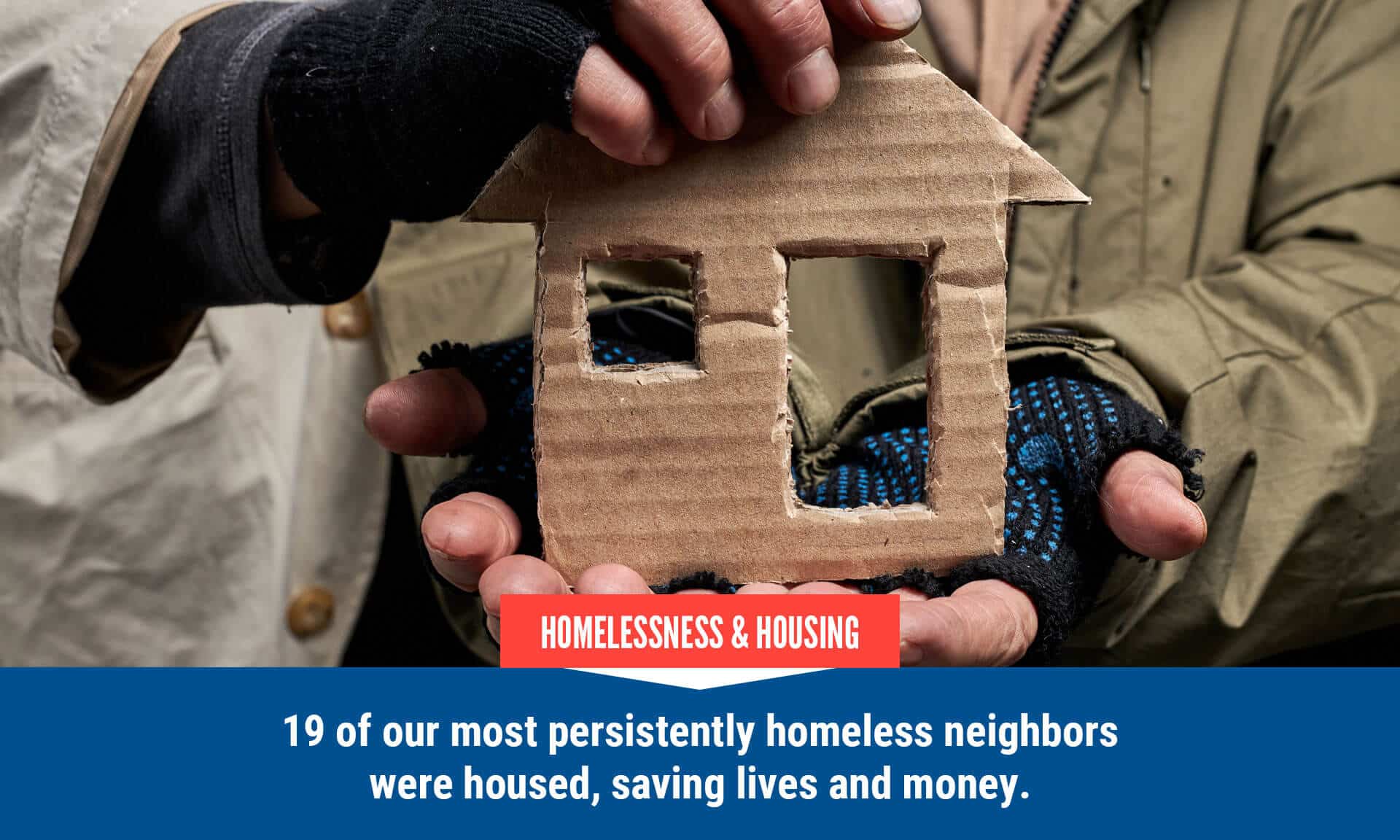
It’s the toughest challenge in all of the work to diminish homelessness in Anchorage: Permanently house and support 150 persistently homeless people who cycle through repeating rounds of street/shelter, crisis care and prison. Break the cycle with the proven benefits of housing and intensive case management for the people who struggle with severe mental illness, trauma past and present, chaotic street life, fetal alcohol spectrum disorders, physical disabilities and addictions – more chronic wounds than most of us can imagine.
A Home for Good pilot proved its worth in 2019-2020, successfully keeping 19 of 21 people in stable, supportive housing. Further, public costs ordinarily incurred by pilot participants were significantly reduced.
All of that led to the official launch of the full-scale project in November 2020 with the ambitious goal of housing 100 people by October 2021 and 150 by October 2022.
By the end of December 2020, Home for Good had 19 people in permanent supportive housing, 13 people in transitional housing and five more people who were not in housing but working on a regular basis with case managers to get there.
“The easiest way to break this cycle is housing somebody. Housing builds trust.”
– Home for Good Case Manager
The Rasmuson Foundation, Alaska Mental Health Trust Authority, Premera Blue Cross and Providence Alaska Foundation are the upfront funders for taking Home for Good beyond the pilot. In addition, the Alaska Community Foundation steered some of its federal pandemic aid money to Home for Good. United Way leads the project in partnership with the Municipality of Anchorage and Social Finance, with help from the Corporation for Supportive Housing. Alaska Behavioral Health and Southcentral Foundation provide the case managers to work one-on-one with clients.
Home for Good uses a funding mechanism called Pay for Success that is also a first for Alaska. It features a simple metric of success to determine public funding: The municipality has agreed to continue funding beyond the philanthropic jump-start only if the project keeps clients housed, with payments made based on how many months clients remain in housing. If Home for Good underperforms, the city’s funding decreases accordingly. In short, the taxpayer only underwrites the program if it works. That’s Pay for Success.


Home for Good – Part 3
Published November 21, 2019, by Michele Brown United Way of Anchorage invites you to join us over the next few weeks as we track Home

Home for Good – Part 2
Published November 1, 2019, by Michele Brown United Way of Anchorage invites you to join us over the next few weeks as we track Home

Home for Good – Part 1
Published October 17, 2019, by Michele Brown United Way of Anchorage invites you to join us over the next few weeks as we track Home







